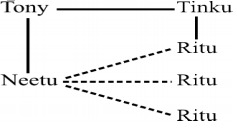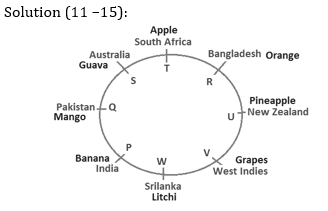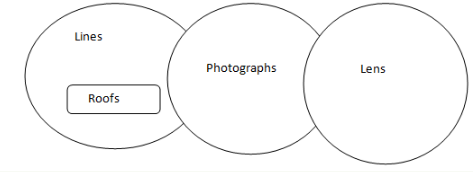Dear Friends, SBI Clerk 2018 Notification has been released we hope you all have started your preparation. Here we have started New Series of Practice Materials specially for SBI Clerk 2018. Aspirants those who are preparing for the exams can use this “20-20” Reasoning Questions.
[WpProQuiz 1382]
Click “Start Quiz” to attend these Questions and view Explanation
Daily Practice Test Schedule | Good Luck
| Topic | Daily Publishing Time |
| Daily News Papers & Editorials | 8.00 AM |
| Current Affairs Quiz | 9.00 AM |
| Logical Reasoning | 10.00 AM |
| Quantitative Aptitude “20-20” | 11.00 AM |
| Vocabulary (Based on The Hindu) | 12.00 PM |
| Static GK Quiz | 1.00 PM |
| English Language “20-20” | 2.00 PM |
| Banking Awareness Quiz | 3.00 PM |
| Reasoning Puzzles & Seating | 4.00 PM |
| Daily Current Affairs Updates | 5.00 PM |
| Data Interpretation / Application Sums (Topic Wise) | 6.00 PM |
| Reasoning Ability “20-20” | 7.00 PM |
| English Language (New Pattern Questions) | 8.00 PM |
| General / Financial Awareness Quiz | 9.00 PM |

Click Here for SBI Clerk Prelims and Mains 2018 – Full Length Mock Test
Directions (Q. 1-5): Each of the questions below consists of a question and three statements numbered I, II and III given below it. You have to decide whether the data provided in the statements are sufficient to answer the questions.
1.How is Vijay related to Priya? (Priya is a girl.)
I.Vijay is the only child of Priya’s sister’s grandfather.
II.Vijay is the only son-in-law of Madhu’s maternal grandfather. Madhu is Priya’s younger sister.
III.Shiva is the only son of Vijay.
- Only I and II
- Only II and III
- Either II or III
- Any two of them
- Either I or II
- Ritu is in which direction of Neetu?
I.Tony is to the north of Neetu, Tinku is to the east of Tony and Ritu is to the south of Tinku.
II.Neetu is to the east of Tony and Tony is to the west of Ritu.
III.Tony is to the west of Tinku.
- Only I
- Only II
- Both I and II
- Both I and III
- All I, II and III even together are not sufficient
3.How is ‘year’ written in a code language?
I.‘best wishes of new year’ is written as ‘ti ga ba pic dic’.
II.‘lucky year for me’ is written as ‘chi pic da ye’.
III.‘how fast year passes’ is written as ‘vo mo pic ki’.
- Only I and II
- Only II and III
- Only I and III
- Any two of them
- All I, II and III are required to answer the question.
4.How many students are there between Ravi and Anuj in a row of sixty students?
I.Raj is twentieth from the left end and Ravi is five places away from Raj.
II.Ravi is twenty-second from the left end and Anuj is twenty-seventh from the right end.
III.Anuj sits at an end.
- Only I
- Only II
- Only III
- Only I and II
- Only I and III
5.Among A, B, C, D, E and F, who is the tallest?
I.B is taller than A and E.
II.F is taller than B but shorter than D who is not the tallest.
III.A is not the shortest.
- Only I and II
- Only II and III
- Only I and III
- All I, II and III
- II and either I or III
Directions (6-10): Study the following information carefully and answer the given questions.
C, D, G, H, J, K and L lives in a seven storey building, The lower-most floor is numbered 1; floor above it is numbered 2 and so on. There are four males and three females among them. Miss L lives in floor number 2. No female lives above the floor in which Miss D lives. H lives in an odd numbered floor and he does not live either on the top-most or lower-most floor. J has to use most number of stairs to reach to his flat,more than anyone else in the building, None of the female lives at the lower-most or top-most floor. K lives just a floor below his sister G’s floor. No two male or female live immediately above or below each other.
- Which of the following floor does number G Lives?
- Two
- Six
- Five
- Four
- Three
- If ‘J’ is related to ‘Floor number 4’, ‘G’ is related to ‘Floor number 1’, then which following is ‘H’ related to?
- Floor number 7
- Floor number 2
- Floor number 5
- Floor number 4
- Floor number 6
- Who among the following exactly sitting between L and H?
- G and K
- J and D
- G and D
- J and K
- C and D
- Who among the following lives on floor number 5?
- K
- J
- D
- L
- H
- Which of the following combinations is true?
- 7 – Female – G
- 3 – Male – C
- 6 – Female – D
- 5 – Male – J
- None of these
Directions (11-15): Study the following information carefully and answer the question given below:
There are eight persons namely- P, Q, R, S, T, U, V and W sitting around a circular table facing the centre, but not necessarily in the same order. Each person belongs to different country i.e. Australia, South Africa, Bangladesh, New Zealand, West Indies, Srilanka, India and Pakistan also likes different kinds of fruits viz.- Mango, Litchi, Apple, Orange, Pineapple, Grapes, Guava and Banana, but not necessarily in the same order.
Person belongs to India sits second to the right of S, who belongs to neither Srilanka nor West Indies. U sits second to the right of the one, who belongs to Srilanka. The one who likes Pineapple sits second to the left of the one, who belongs to South Africa. Two people sit between the one, who belong to West Indies and Q. V and the one, who belongs to New Zealand are immediate neighbours of each other. Persons who like Orange and Grapes are adjacent to the one who belongs to New Zealand. Person likes Orange sits immediate left of the one who belongs to South Africa. Q does not like Guava and Banana. The one who likes Banana sits second to the right of the one who likes Guava. R and T is immediate neighbour of each other. Neither R nor T is an immediate neighbour of either Q or the one who belongs to Srilanka. Q is not belongs to New Zealand. The one who belongs to South Africa sits second to the left of the one who belongs to Pakistan. Person who likes Apple sits fourth to the right of the one who likes Litchi. The one who likes Guava is not immediate neighbour of the one who belongs to Srilanka. Neither R nor T sits third to the left of the person, who belongs to Srilanka. P likes Banana. Only one person sits between R and the one who belongs to Australia. W sits third to the left of the one who belongs to Bangladesh. W does not like Apple.
Q11. What is the position of Q with respect to the one, who belongs to South Africa?
- Second to the left
- Second to the right
- Sixth to the left
- Third to the right
- Both (b) and (c)
Q12. Which of the following fruits does Q like?
(a)Pineapple
(b) Mango
(c) Apple
(d) Litchi
(e) None of these
Q13. Who sits opposite P?
(a)The one who belongs to Srilanka
(b)The one who belongs to South Africa
(c)The one who belongs to New Zealand
(d)The one who belongs to Bangladesh
(e)None of these
Q14. Four of the following five are alike in a certain way and hence they form a group. Which one of the following does not belong to that group?
(a)S
(b) The one who likes Banana
(c) The one who belongs to South Africa
(d) The one who belongs to New Zealand
(e) The one who likes Orange
Q15. U belongs to which of the following country?
(a)Bangladesh
(b) India
(c) West Indies
(d) South Africa
(e) New Zealand
Direction (Q 16-20): In the following questions, only one Conclusion is given and five statements are given as a), b), c), d) and e). From this you have to take the statements to be true even if they seem to be at variance with commonly known facts and then decide which of the given statement logically follows.
- Conclusions:
Some tables are desks
Some squares are desks is a possibility
Some tables are plastics
Some squares are plastics is a possibility
a) Statements:
Some desks are plastics
Some plastics are tables
Some tables are squares
b) Statements:
Some desks are plastics
Some plastics are tables
All tables are squares
c) Statements:
Some desks are plastics
All plastics are tables
Some tables are squares
d) Statements:
Some desks are plastics
No plastics are tables
Some tables are squares
e) Statements:
All desks are plastics
No plastics are tables
All tables are squares
- Conclusions:
No sweet is a pencil
Some dark are not sweets
Some boxes are sweets
Some dark are pencils
a) Statements:
All sweets are boxes
All boxes are pencil
Some pencils are dark
b) Statements:
All sweets are boxes
No box is pencil
No pencils are dark
c) Statements:
Some sweets are boxes
All boxes are pencil
Some pencils are dark
d) Statements:
All sweets are boxes
No box is pencil
Some pencils are dark
e) Statements:
Some sweets are boxes
Some box is pencil
Some pencils are dark
- Conclusions:
Some silvers are books is a possibility
Some chains are guides
Some guides are silvers is a possibility
Some silvers are chains
a) Statements:
Some books are guides
Some guides are chains
No chains are silvers
b) Statements:
Some books are guides
No guides are chains
All chains are silvers
c) Statements:
All books are guides
No guides are chains
All chains are silvers
d) Statements:
All books are guides
No guides are chains
No chains are silvers
e) Statements:
Some books are guides
Some guides are chains
Some chains are silvers
- Conclusions:
Some lines are roofs
Some lens are lines is a possibility
Some lenses are photographs
Some photographs are roofs is a possibility
a) Statements:
All roofs are lines
Some lines are photographs
Some photographs are lens
b) Statements:
All roofs are lines
Some lines are photographs
No photographs are lens
c) Statements:
No roofs are lines
All lines are photographs
Some photographs are lens
d) Statements:
All roofs are lines
No lines are photographs
No photographs are lens
e) Statements:
No roofs are lines
No lines are photographs
Some photographs are lens
- Conclusions:
Some covers are nails
Some tablets are nails
Some covers are tigers
Some covers are tablets
a) Statements:
Some nails are tigers
Some tigers are tablets
All tablets are covers
b) Statements:
Some nails are tigers
All tigers are tablets
All tablets are covers
c) Statements:
Some nails are tigers
All tigers are tablets
Some tablets are covers
d) Statements:
Some nails are tigers
Some tigers are tablets
Some tablets are covers
e) Statements:
All nails are tigers
Some tigers are tablets
All tablets are covers
Answers:
Directions (Q. 1-5):
- Answer: e;
From I. Vijay is Priya’s father.
Thus, I alone is sufficient.
From II. Vijay is Priya’s father. Thus, II alone is sufficient.
From III. Nothing is mentioned about Priya. So we can’t find any relationship between Vijay and Priya.
- Answer: e;
From I.

We can’t say exactly in which direction of Neetu is Ritu. Three possible directions are North-East, and East or South-East.
Thus, I alone is not sufficient.
From II. There are two possibilities:
Tony Ritu Neetu
or
Tony Neetu Ritu
So, we can’t say the exact direction.
Thus, II alone is not sufficient.
From III. Nothing is mentioned about Ritu and Neetu. So, III alone is not sufficient.
From I and II together
We can’t find the directions
Thus, both even together are not sufficient.
From I and III together

We can’t find the direction.
From I, II and III together
We can’t find the exact direction.
Thus, all I, II and III even together are not sufficient to answer.
3.Answer: d;
From I.
best wishes of new year ® ti ga ba pic dic
From II.
lucky year for me ® chi pic da ye
From III.
how fast year passes ® vo mo pic ki
From I and II.
year ® pic
Thus, I and II together are sufficient.
From II and III
Pic ® year
Thus, II and III together are sufficient.
From I and III.
pic® year
Thus, only III and I together are sufficient.
4.Answer: b;
From I. Nothing is mentioned about Anuj. So, we can’t say anything about how many between Ravi and Anuj.
From II. Anuj is 27th from the right end, ie Anuj is (61-27)th from the left end, ie 34th from the left end. Number of students between Ravi and Anuj = 34 – 22 – 1 = 11
Thus, II alone is sufficient.
From III. It is not clear at which end Anuj is standing. So, we can’t determine the number of students between Ravi and Anuj. Thus, only III is not sufficient
5.Answer: a
From I. B > A and E.
From II. D > F > B and D is not the tallest.
From III. A is not the shortest.
From I and II. D > F > B > A, E.
C is the tallest.
Thus, only I and II together are sufficient.
From II and III.
No definite relationship.
From I and III.
We can’t say who is the tall as nothing is mentioned about C, D and F
Direction (Q 6-10):
| Floor | Person | Gender |
| 7 | J | Male |
| 6 | D | Female |
| 5 | H | Male |
| 4 | G | Female |
| 3 | K | Male |
| 2 | L | Female |
| 1 | C | Male |
6. Correct Answer is: d)
- Correct Answer is: b)
- Correct Answer is: a)
- Correct Answer is: e)
- Correct Answer is: c)

S11.Answer: (e)
S12. Answer: (b)
S13. Answer: (d)
S14. Answer: (b)
S15. Answer: (e)
Direction (Q 16-20):
- Correct Answer is: c)

17. Correct Answer is: d)
 18. Correct Answer is: e)
18. Correct Answer is: e)
 19. Correct Answer is: a)
19. Correct Answer is: a)
 20. Correct Answer is: b)
20. Correct Answer is: b)

Click Here for SBI Clerk Prelims and Mains 2018 – Full Length Mock Test





